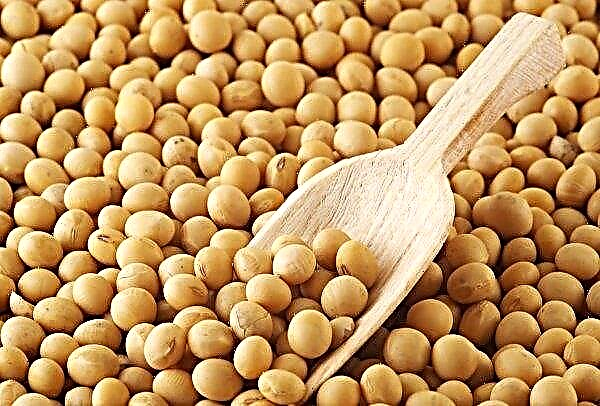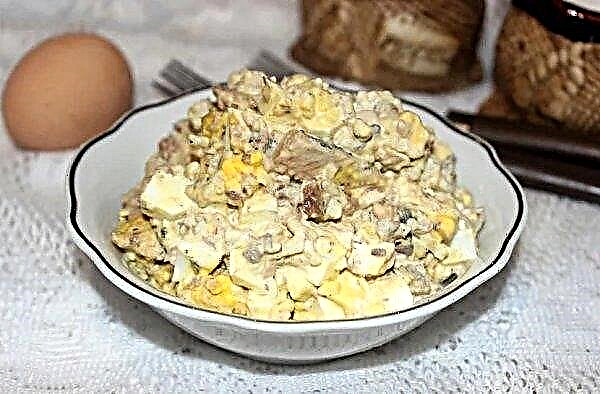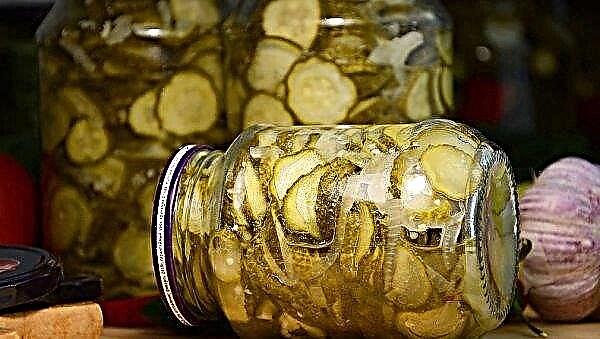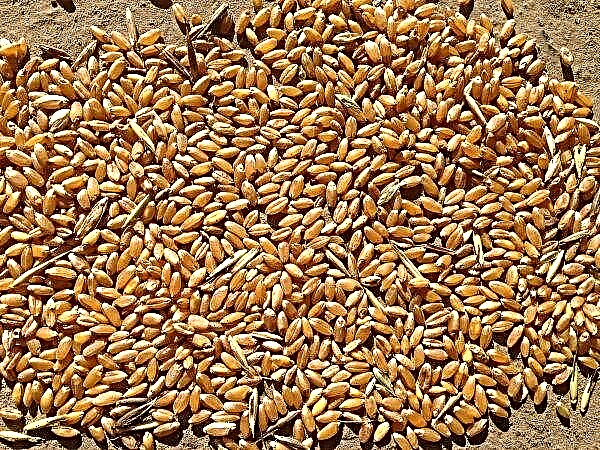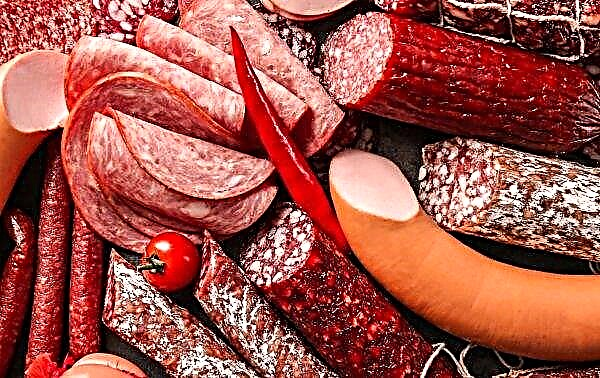In the world there are about twenty species and ten wheat hybrids. They differ greatly in quality and number of falls. The cost of flour and the taste of bakery products depend on the size of this indicator. You can determine the state of emergency thanks to a special analysis, which is carried out according to a certain algorithm.
What is the fall number of wheat grains
All existing types of wheat differ in chemical composition, weight and fall number. The last indicator is regulated by GOST and, in order to determine it, it is necessary to conduct a certain analysis using laboratory equipment.

The fall number of wheat grain is the degree of dynamism of alpha-amylase (enzyme), which characterizes the baking quality of cereal flour. The parameter under consideration reflects the level of starch and the intensity of the catalyzing glycosyl hydrolase. This enzyme is activated exclusively in contact with water.
Alpha amylase productivity coefficient increases when grain germinates when stored under inappropriate conditions or when it ripens after harvesting. Often cereals germinate before harvesting if moisture levels are exceeded due to frequent rainfall or fog. Due to excessive dampness, the water absorption characteristics of flour are reduced. If you measure the fall numbers of wheat in advance, you can get the final product with stable characteristics.Did you know? In 1904, wheat grains, about 5 thousand years old, were found near Ashgabat.

Optimal value
The fall number is an index that allows you to correctly classify the crop according to qualitative characteristics. The measure is seconds. In the State register of grain crops (document - GOST 52189-2003) are indicated optimal values of boundary indicators for all varieties of flour:
- Extra, highest and first - at least 185.
- The second and wallpaper - about 160.
What affects the number of falls
A huge number of indicators, including the content of sprouted specimens, affect the quality of grain. This process occurs both before harvesting and during storage. Cereals can germinate in the fields if the air has high humidity. Therefore, it is impossible to influence this.
There is a way to prevent germination in the barn. To do this, adjust the optimal room temperature (from + 10 ° С to + 15 ° С) and humidity level (not more than 55%).
The necessary instruments for determining the indicator
To determine the indicators of PE wheat grain, you will need a special device. It must comply with technological requirements, and constructively consist of:
- a water bath in which the tubes will be heated;
- mixer in vertical position;
- schemes for fixing the time of the change in the position of the rod;
- indicator display.
Important! The laboratory device must comply with all GOST indicators, so it is preferable to use the PCPP-5 and PCPP-7 models. Often there is equipment of Turkish manufacturers Erkaya and Bastak.
The following equipment will also be required:
- spectral photometer;
- stopwatch;
- mill;
- centrifuge;
- Libra;
- pH meter.

In addition to devices, special reagents need to be prepared:
- calcium chloride;
- iodine;
- buffer solution.
Measurement process
When the analytical base is fully prepared, you can begin the measurement process. It consists of several stages: preparation, mixing and analysis. The result of the first two stages is completely dependent on human participation. The effectiveness of the main process is affected by the compliance of the equipment with all quality standards.
Training
The primary manipulation is sampling. The procedure is carried out using a selector (manual or automatic design). After that, you need to grind the grains using a special laboratory device. Weigh the sample, because its optimal weight should be 300 g.
The moisture content of the sample is about 18%. If the indicators are much higher, then it should be placed in a drying cabinet. Next, clean the sample of impurities, and pass through the mill. Sift the crushed sample using a silk sieve, in which the mesh size is not more than 0.8 mm. Weigh two samples of flour so that each of them was 7 g, i.e. this amount will be enough for the upcoming analysis.
Important! The difference between the selected 300 g and the seven-gram sample is explained by the fact that it is necessary to conduct a representative sampling.
Mixing
The mentioned process consists of the following steps.
- Test tubes (viscometric) fill with flour.
- Add purified (distilled water) in a volume of 25 ml. Its temperature should be + 20 ° C.
- Close the lid.
- Shake containers by hand until a uniform consistency of substance is obtained, without lumps.

Analysis
Before you begin to analyze the number of wheat drops, you need to prepare a water bath. If the equipment allows, you can program the operating mode. Open the tubes and insert the stir bar into the calibration holes.
Important! It is possible to determine the emergency state of wheat grain by the level of counteraction provided by the solution. To do this, you need to track the time on the stopwatch. The longer the rod mixers sink to the bottom, the higher the quality of the flour.
Next, the following processes occur:
- The pins of the rod-mixer are fixed with grippers, and move with a frequency of 2 Hz.
- Content thickens and swells.
- Starch decomposes, i.e., amylase is activated.
- After a minute, the rod mixers sink to the bottom of the tube.

How falling numbers affect bread quality
Given that wheat flour may be different in variety, then the bread will be different in quality. The differences are in the taste, smell and density of the crumb. In the process of determining the properties of bakery products, take into account the number of falls. They can be low and high.
At low rates
If the emergency is much lower than the permissible limit, then the bread will be with a sour taste and a bright pleasant malt aroma. The presence of a porous structure and shape stability are also reduced. The low quality of the test can be explained by low absorption.
If you want to improve the quality indicators of bakery products, then this can be done using oxidizing agents. With their help, the activity of enzymes is reduced.Did you know? The ancient Slavs used wheat grains as a talisman. It was believed that they protect against corruption and attract wealth.
The most common compounds used in the food industry include:
- potassium iodate;
- ascorbic acid;
- hydrogen peroxide;
- calcium perhydrol.
 The main purpose of these substances is to strengthen gluten. This improves the quality of the bread.
The main purpose of these substances is to strengthen gluten. This improves the quality of the bread.High quality performance
GOST does not indicate maximum indicators of the number of falls. However, an increased coefficient negatively affects the quality of the flour. This may mean that the activity of the enzymatic components of the raw material is reduced. And they must participate in the fermentation process and achieve optimal rheological parameters.
If you use flour with high quality properties, the starch contained in it will not contribute to the fermentation of yeast. Lack of nutrition affects the fact that insufficient organic acids and carbon dioxide will be released in the test. This significantly reduces the amount of the finished product (bread). The taste of the product will be too fresh, without a pronounced aroma.Important! Most often, low activity is associated with improper drying. Most likely, you have set the temperature too high.

So, now you know what the fall number of wheat grain is, and how you can determine it. If you select the right devices and product, then the analysis is carried out very quickly.





